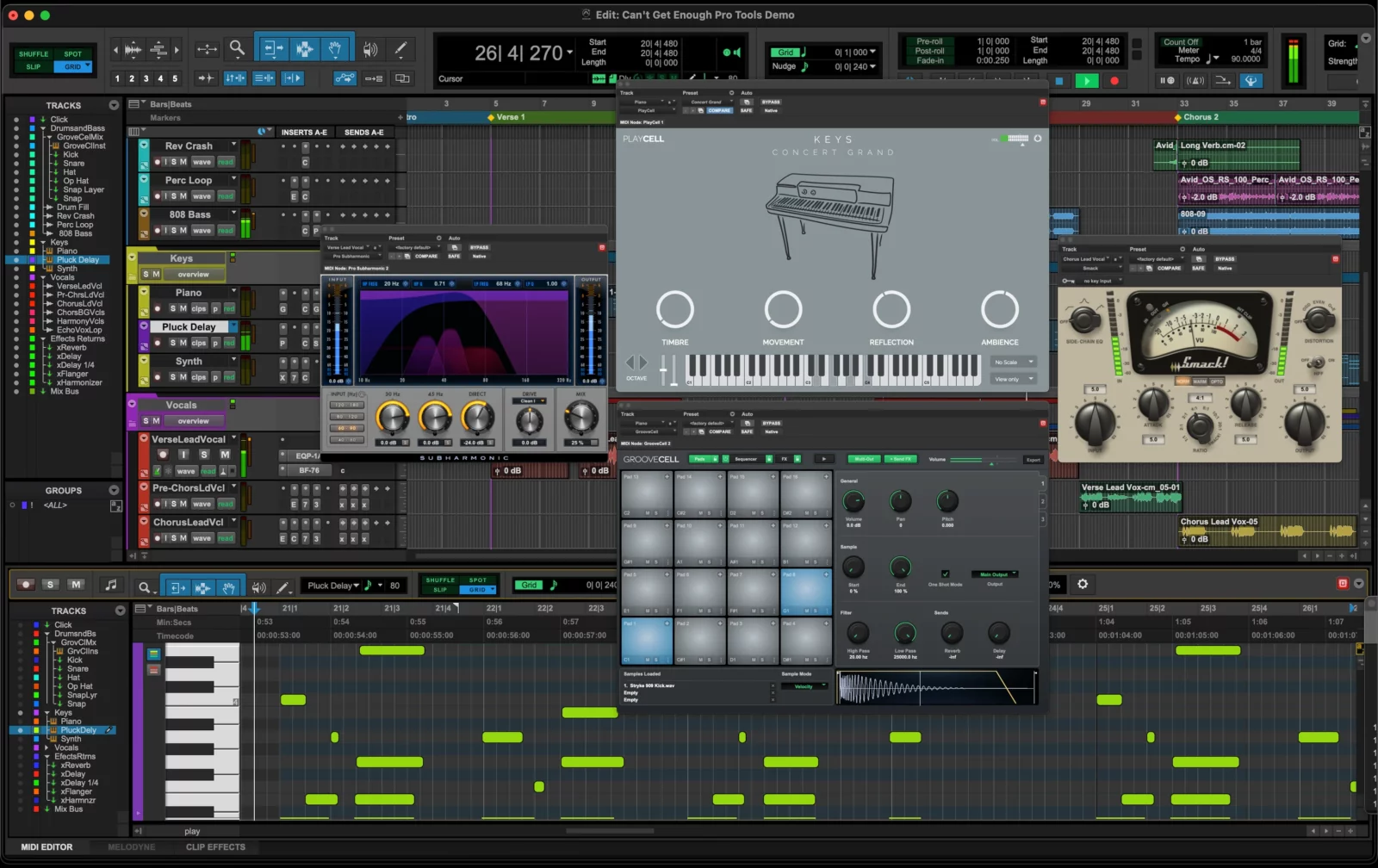Avid Pro Tools

Avid Pro Tools: The Ultimate DAW for Audio Recording and Mixing
Introduction
If you are a professional audio engineer, producer, or musician, you are likely familiar with Avid Pro Tools.
Widely considered the industry-standard digital audio workstation (DAW) for audio recording, mixing, and post-production, Pro Tools has been a go-to choice for audio professionals for decades.
In this article, we will explore the pros and cons of using Pro Tools for your audio production needs and why it continues to dominate the market.
Pros of Pro Tools
Professional Audio Recording and Mixing Capabilities
One of the key strengths of Pro Tools is its professional-grade audio recording and mixing capabilities.
With advanced audio editing features such as clip gain, elastic audio, and batch processing, Pro Tools provides precise control over audio tracks, allowing for efficient editing and mixing workflows.
Its mixing capabilities, including a comprehensive set of built-in audio effects, automation features, and advanced routing options, enable precise control over the mix and mastering process.
Pro Tools is known for its high-quality audio recording and editing tools, making it a top choice for audio professionals who demand the best.
Wide Range of Audio Plugins and Virtual Instruments
Pro Tools offers a vast selection of high-quality audio plugins and virtual instruments, including those developed by Avid as well as third-party developers.
This allows users to expand their creative options and achieve professional-level sound quality in their productions.
Pro Tools also supports the AAX plugin format, which is a widely accepted industry standard, ensuring compatibility with a wide range of plugins from various manufacturers.
Whether you need realistic virtual instruments or powerful audio effects, Pro Tools has you covered.
Collaborative Workflow
Pro Tools is known for its robust collaborative workflow features, making it a popular choice for professional studios and teams working on large-scale projects.
Pro Tools Cloud Collaboration allows users to collaborate on projects in real-time, share tracks, and work together seamlessly, regardless of their physical location.
This makes it ideal for remote collaboration, post-production workflows, and collaborative music production projects.
Pro Tools streamlines the creative process, allowing multiple users to work together efficiently and effectively.
Industry-Standard Compatibility
As the industry standard, Pro Tools has extensive compatibility with industry-standard hardware and software.
It is compatible with a wide range of audio interfaces, control surfaces, and other hardware, making it easy to integrate into existing studio setups.
Pro Tools also supports industry-standard file formats, making it compatible with other DAWs and post-production workflows.
This ensures that Pro Tools users can collaborate with other professionals seamlessly and work in a versatile and flexible environment.
Robust Post-Production Features
Pro Tools is known for its powerful post-production features, making it a top choice for film and television production.
With advanced features, such as video editing, time code synchronization, and surround sound mixing, Pro Tools provides a comprehensive solution for post-production workflows.
Its versatility and capabilities make it a preferred choice for professionals working on audio for visual media.
Reliable and Stable Performance
Stability and reliability are crucial in professional audio production environments, and Pro Tools delivers in this area.
Designed to handle large-scale projects with multiple tracks, plugins, and virtual instruments without compromising performance or stability, Pro Tools ensures that your workflow remains smooth and efficient.
Pro Tools is known for its stability, making it a trusted choice for professionals who demand reliability in their audio production software.
Cons of Pro Tools
Higher Price Point
One of the main drawbacks of Pro Tools is its higher price point. Positioned as a premium DAW, Pro Tools and its additional plugins and virtual instruments can be expensive, making it less accessible for budget-conscious users, especially those who are just starting out in music production.
The cost of Pro Tools software and associated plugins may be a barrier for some users, particularly hobbyists or those on a tight budget.
Steeper Learning Curve
Pro Tools has a steeper learning curve compared to some other DAWs.
Its extensive features and advanced capabilities may take some time for beginners to master, especially if they are new to digital audio recording and editing.
Pro Tools has a complex interface with a wide array of menus, buttons, and options, which may require a significant investment of time and effort to learn and navigate efficiently.
Hardware Requirements
Pro Tools has specific hardware requirements, including compatibility with Avid interfaces and hardware, which may limit the options for users who already have different audio interfaces or control surfaces.
Upgrading or purchasing new hardware to meet Pro Tools’ requirements can add to the overall cost of using the software, which may not be feasible for all users.
Limited Customization
Compared to some other DAWs, Pro Tools may have limited customization options.
Users may not be able to fully customize the interface or workflow to suit their preferences or specific needs, which may be a limitation for some users who prefer a more personalized approach to their workflow.
Subscription Model
Avid has transitioned to a subscription-based model for Pro Tools, which may not be preferred by all users.
Some users may prefer a one-time purchase option rather than a recurring subscription, which can add up over time.
The subscription model may also pose challenges for users who need to access their projects or collaborate with others without an active subscription.
Conclusion
Pro Tools remains the industry-standard DAW for audio recording and mixing, offering professional-grade capabilities, a wide range of plugins and virtual instruments, robust post-production features, and a collaborative workflow.
However, it also has some drawbacks, including a higher price point, steeper learning curve, specific hardware requirements, limited customization, and a subscription-based model.
When choosing a DAW, it’s essential to consider your specific needs, budget, and workflow preferences to determine if Pro Tools is the right choice for you. Despite its limitations, Pro Tools continues to be a top choice for professional audio engineers, producers, and musicians due to its extensive features, reliability, and reputation in the industry.











